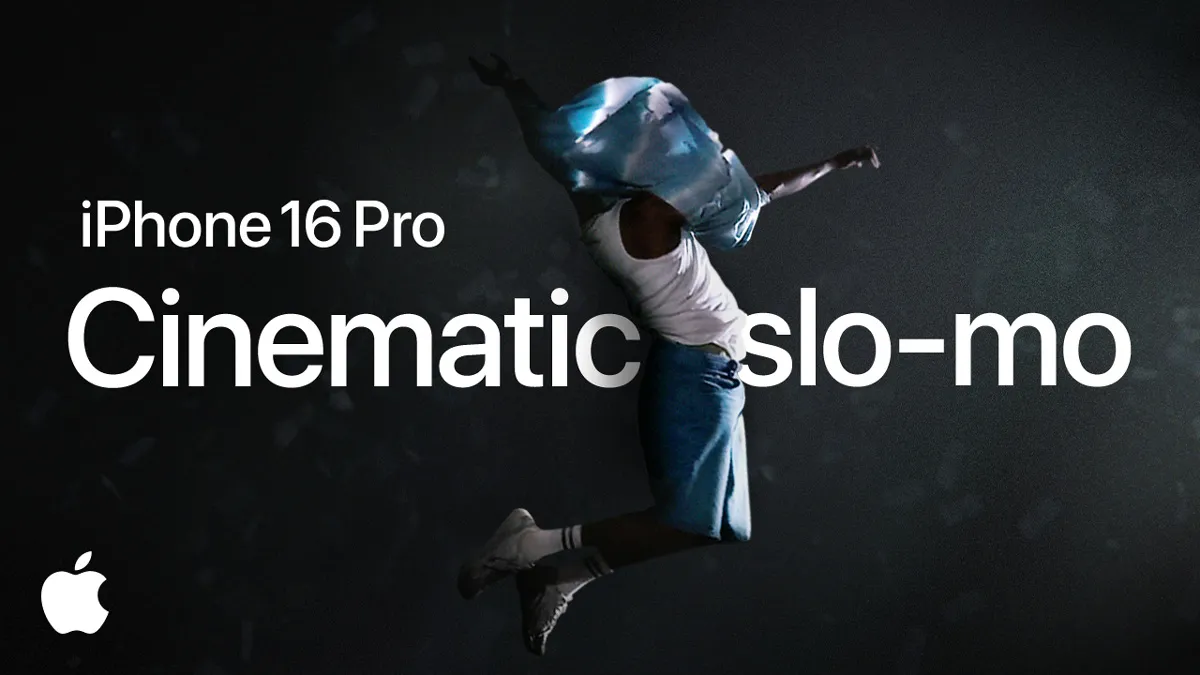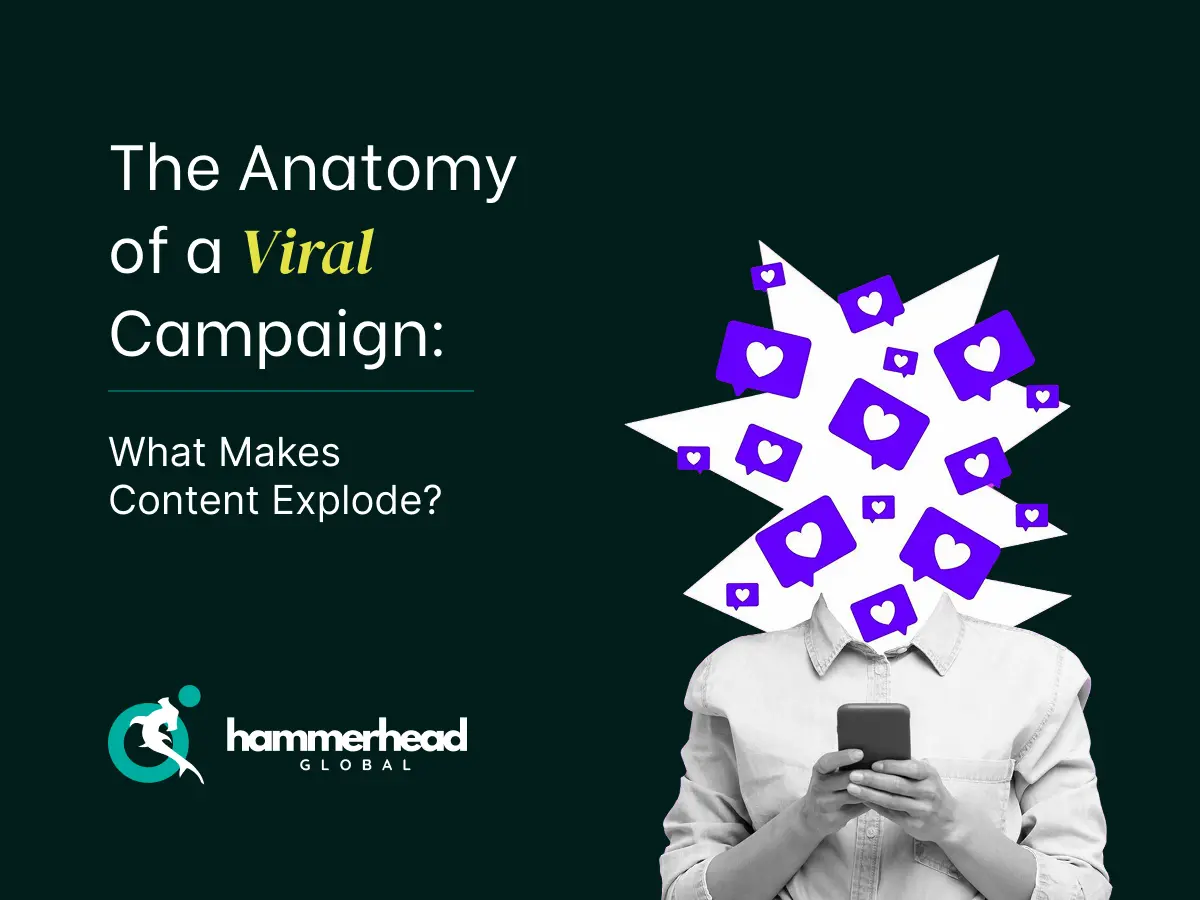The Anatomy of a Viral Campaign: What Makes Content Explode?
Every brand dreams of going viral creating that one campaign that catches fire, spreads like digital wildfire, and dominates conversations. But how do you make content go viral? Is it luck? Timing? A secret formula only the biggest brands know?
The reality is, virality isn’t an accident- it’s engineered.
From emotional storytelling and shock factor to cultural relevance and strategic distribution, the most viral ads of 2024 share a set of common traits that make them unforgettable. Whether it’s a viral social media video that racks up millions of views overnight or a branded campaign that gets reshared across platforms, every successful viral ad follows a clear psychological and strategic playbook.
So, if you want to understand the anatomy of a viral campaign, break down what works and what doesn’t, and learn how to make content viral, you’re in the right place.
Let’s dissect the most shared ads of 2024 and uncover the lessons that can take your brand from background noise to front-page headlines.
The Science Behind Virality: Why Do Some Ads Spread Like Wildfire?
Going viral isn’t just about creating great content; it’s about triggering a response so strong that people feel compelled to share it.
At its core, viral content is psychological. The human brain is wired to seek out, engage with, and share content that sparks emotion, confirms beliefs, or elevates social status. Studies have shown that ads that evoke strong emotions, whether happiness, surprise, fear, or nostalgia, are 2X more likely to be shared than those that don’t.
Emotional content spreads because it makes people feel something powerful. The most viral campaigns of 2024 leveraged three key emotional triggers to ignite engagement:
Joy & Humor: The Shareability Factor

Laughter is contagious. Ads that make people smile, laugh, or feel good create instant social currency meaning people want to share them because it makes them look good by association.
Take Burger King’s 2024 "Have It Your AI" campaign, where they allowed customers to create custom Whopper orders based on AI-generated ideas. The mix of humor, absurdity, and tech culture relevance turned it into a viral sensation, amassing millions of TikTok duets and reshared memes.
Shock & Controversy: The Disruptor Effect
Nothing grabs attention faster than the unexpected. Brands that challenge norms, provoke discussions, or break the status quo create campaigns that people feel compelled to talk about
A prime example? Nike’s "Run Without Limits" ad featuring the first-ever AI-powered running shoe that adjusts in real-time to the runner's pace. While some hailed it as innovative, others debated the ethics of AI in sports. The result? Massive engagement, endless discussions, and millions of shares.
Nostalgia & Sentimentality: The Connection Builder
Nostalgia marketing remains one of the most powerful emotional tools for virality. Why? Because people love revisiting things that remind them of simpler, happier times.
This year, Pepsi reintroduced its 1990s branding for a limited campaign, complete with throwback commercials and retro packaging. The nostalgia play instantly went viral, with audiences flooding social media with childhood memories, user-generated content, and unboxing videos.
The Most Shared Ads of 2024: What Worked & Why
The best way to master viral marketing is to study those who have already done it. Some campaigns don’t just capture attention- they dominate conversations, fuel engagement, and become cultural phenomena. Here are three of the most shared ads of 2024 and the key takeaways you can apply to your own campaigns.
Apple’s "Capture Everything"

Apple’s "Capture Everything" campaign became an instant viral success, not because of flashy specs, but because it tapped into raw human emotion. Instead of showcasing just the latest iPhone features, the ad told the story of a daughter capturing her aging father’s life through her phone. The emotional weight, combined with a deeply relatable narrative and cinematic execution, made it a masterpiece in viral storytelling. By forging an emotional connection with viewers, Apple ensured that audiences didn’t just watch the ad- they felt it, shared it, and talked about it long after it aired.
Oreo’s "The Last Bite"
Oreo’s "The Last Bite" campaign took humor and cultural trends to the next level. The brand launched a playful debate on the "right way to eat an Oreo," sparking a viral conversation across social media. With celebrities and influencers jumping in on the trend, the campaign turned a simple brand message into an interactive viral moment. Audiences weren’t just watching- they were participating, creating their own spin on the debate and generating millions of organic interactions. Oreo’s ability to blend humor with social engagement made this campaign a viral powerhouse.
Adidas x Marvel’s "Superhero Sneakers"
Adidas and Marvel’s "Superhero Sneakers" collaboration was a textbook example of brand partnerships done right. By fusing the power of fandom-driven excitement with exclusivity, Adidas created an instant social media explosion. Fans rushed to buy, post, and share their limited-edition sneakers, driving demand through the roof. The campaign’s multi-platform promotion across TikTok, Instagram, and Twitter maximized exposure, proving that when brands align with strong cultural forces, virality becomes inevitable.
Each of these campaigns thrived because they understood what makes people engage and share- emotion, humor, and cultural relevance. The key to making content go viral isn’t just producing great ads; it’s creating something that feels personal, sparks conversation, and demands to be shared.
Related: What Makes an Ad Memorable? The Psychology Behind Great Ads
How to Make a Video Go Viral: Lessons from 2024’s Biggest Campaigns
If you want your brand’s content to explode, virality isn’t about chance- it’s about strategy. The most successful viral videos of 2024 didn’t just happen; they were engineered to trigger emotional responses, align with cultural trends, and encourage mass sharing. If you want to create viral content that dominates social media, you need to understand how people think, what they engage with, and why they share.
Create Emotionally Charged Content
People don’t share facts they share feelings. Whether it’s laughter, inspiration, nostalgia, or shock, viral videos make people feel something strong enough to want to pass it along. Research shows that emotionally driven content is twice as likely to be shared compared to neutral content.
If your video makes people laugh, cry, feel nostalgic, or even sparks controversy, it has a higher chance of going viral. A campaign like Apple’s "Capture Everything" resonated because it told a deeply human story rather than just selling a product. On the other hand, humorous content like Oreo’s "The Last Bite" played into lighthearted debates, making audiences feel personally connected to the brand.
The key? Make people care. If your content doesn’t trigger an emotional response, it won’t stick.
Ride the Cultural Wave
Viral campaigns don’t exist in isolation they tap into cultural moments, trends, and conversations that are already happening. From meme culture to global events, trending challenges, and social movements, the most shareable content feels timely, relevant, and part of a bigger cultural conversation.
Brands like Nike, Adidas, and Burger King have mastered this strategy, aligning their campaigns with topics their audiences are already invested in. For example, Burger King’s "Have It Your AI" campaign wasn’t just about burgers- it was a commentary on the growing influence of AI, packaged with humor and interactivity that made it instantly shareable.
If your brand isn’t listening to the culture, monitoring trends, and adapting in real-time, you’re missing the biggest opportunity for virality.
Make Sharing Effortless
The most viral content isn’t just great it’s easy to share. Social media users have short attention spans and even shorter decision-making windows when it comes to engaging with content. If sharing your video requires too many steps or isn’t platform-friendly, it’s dead in the water.
To make your content go viral, it should be:
- Short and to the point: TikTok, Instagram Reels, and YouTube Shorts have proven that bite-sized content is the future of social engagement.
- Interactive and remixable: Give audiences a way to participate in the trend, remix your content, or put their own spin on it (think TikTok duets and Instagram challenges).
- Optimized for every platform: A video that works on TikTok might need a different format for Twitter or LinkedIn. Brands that tailor their content to platform-specific behaviors see higher engagement and shareability.
When content is frictionless to share and encourages audience participation, it has a far better chance of gaining traction.
Leverage Influencers & Community Participation
Virality is rarely a solo act. It’s amplified by the right people, at the right time, in the right places. Influencers, creators, and fan communities play a massive role in making content explode.
When Adidas launched its "Superhero Sneakers" campaign, it didn’t just rely on traditional advertising- it partnered with influencers, Marvel superfans, and sneaker culture bloggers to make sure the campaign reached the right audience organically. This community-driven approach ensured that the campaign didn’t just feel like another corporate ad- it became something people genuinely cared about.
For your content to go viral, identify the right voices in your industry and bring them into the campaign early. Whether through influencer partnerships, UGC challenges, or fan engagement, a viral campaign spreads fastest when it’s not just coming from the brand- but from the people who influence your audience the most.
Related: Best Social Media Platforms for Advertising in 2025
Virality is a Formula, Not a Fluke: Final Takeaway
The most successful viral campaigns of 2024 weren’t random strokes of luck- they were meticulously crafted, data-driven, and engineered for mass appeal. The brands that mastered viral content didn’t just post and hope for the best; they strategically designed their campaigns to evoke emotion, align with cultural trends, and make sharing irresistible.
From the heartfelt storytelling in Apple’s "Capture Everything" to the humor-infused, participatory nature of Oreo’s "The Last Bite", viral success happens when brands understand human psychology, leverage social behavior, and amplify their reach through influencers and community engagement.
If you want to create a viral social media video that actually breaks through the noise, the formula is simple:
- Make people feel something. Emotion is the currency of virality. If your content doesn’t evoke a strong reaction- laughter, nostalgia, shock, or inspiration- it won’t stick.
- Join (or create) a cultural conversation. Viral moments don’t happen in isolation. The best campaigns ride the wave of trending topics or create something so bold that it becomes the trend itself.
- Remove friction from sharing. If your content isn’t optimized for TikTok, Instagram, YouTube Shorts, and Twitter, it’s already at a disadvantage. The most shared content is short, visually engaging, and platform-friendly.
- Get the right people talking. Influencers, content creators, and online communities accelerate virality. A strong network spreads your content faster than any paid campaign ever could.
In today’s world, the best content doesn’t just get seen- it gets shared. If your brand isn’t thinking about emotion, timing, and social amplification, you’re already a step behind. Virality isn’t an accident- it’s an art, a science, and a strategy.
Must Read: The Ultimate Guide to Modern Advertising
FAQs
What is the key ingredient in a viral campaign?
The most important element of viral content is emotion. Whether it’s happiness, nostalgia, surprise, or even controversy, the content must evoke a strong reaction that compels people to share.
How long should a viral social media video be?
Short-form content performs best. Videos between 15 to 60 seconds tend to go viral more often because they hold attention, are easy to consume, and fit platform algorithms like TikTok, Instagram Reels, and YouTube Shorts.
Does virality happen by luck or strategy?
Virality is engineered, not accidental. Successful viral campaigns are data-driven, culturally aware, and strategically designed to maximize engagement, emotional impact, and shareability.



.svg)